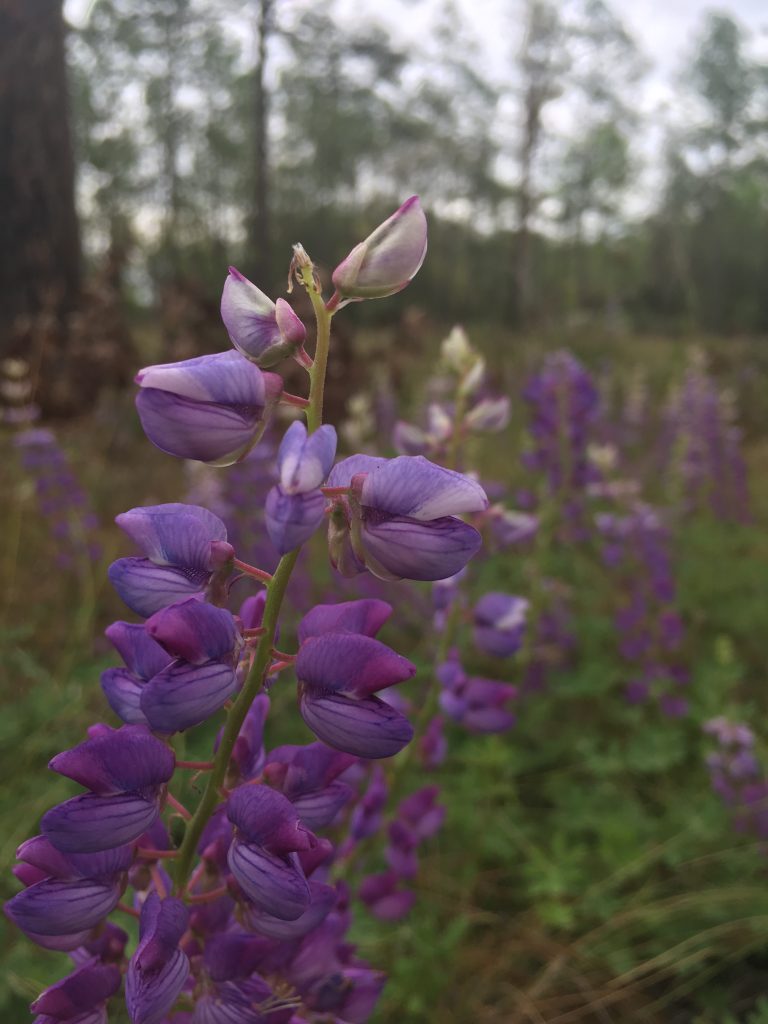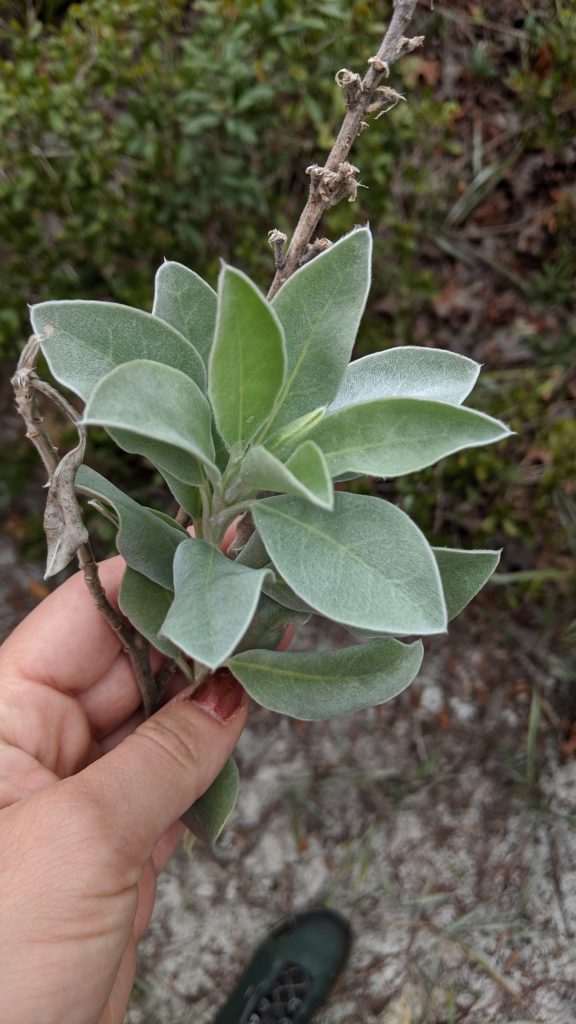By Mark Tancig
Bontanist, FCV Contributor

Early spring is a great time to be out visiting natural areas in Florida. Not only is the temperature and humidity bearable, but there are many eye-catching wildflowers in bloom. One of the most stunning displays of color are the native Lupines. Lupines, or bluebonnets as they are called in Texas, are treasured as an ornamental plant around the world due to their showy flowers and attractive foliage, but are also an important part of Florida’s natural heritage. Lupines (Lupinus spp.) can be found throughout Florida, though they are most commonly observed in north Florida. There are five different lupines native to Florida:
- skyblue lupine (L. diffusus) – west panhandle, central/southern peninsula
- sundial lupine (L. perennis) – panhandle to northern peninsula –
- lady lupine (L. villosus) – panhandle to northern peninsula
- Beckner’s lupine (L. westianus var. aridorum) – central peninsula
- Gulf Coast lupine (L. westianus var. westianus) – western panhandle.
The last two species in the above list are endemic species, meaning they do not occur naturally outside of Florida. Beckner’s lupine only occurs in three counties of central Florida while the Gulf Coast lupine is present in eight counties of the panhandle. They are both listed as threatened by the State of Florida.
Lupines tend to prefer the well-drained sands of Florida’s sandhill and scrub ecosystems. Natural areas containing these plant communities that are well managed, through prescribed fire and invasive plant management, are likely to have some lupine.

During their bloom, the clustered spikes of bright purple, pea-shaped flowers are easy to spot. Even when not in bloom they can be spotted by their soft, fuzzy leaves with a gray appearance due to the many hairs that cover the leaf, an evolutionary adaptation to conserve water in dry habitats. One species, the sundial lupine, has palmately divided leaves.
In addition to their beauty, lupines have been used throughout history as a food source and cover crop. As a legume, its seeds have been used much like other beans, though preparations are often necessary to remove bitter alkaloids. The ancient Romans used them as a cover crop due to their nitrogen-fixing abilities.

